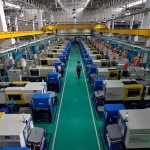[ad_1]
The company will only issue new shares, and existing shareholders will not sell any stake, according to the Draft Red Herring Prospectus (DRHP).
Here are some of the risk factors that the company has highlighted in its DRHP:
Revenue concentration from offtakers
The company derives a significant portion (over 87%) of its revenue from top five offtakers in fiscal 2024, with its single largest offtaker contributing around 50% of revenue from operations in FY24. Loss of any of these customers or a deterioration of their financial condition could adversely impact the business.
NTPC Green Energy stated that it will continue to rely on the top nine offtakers for a large portion of revenue for the rest of FY25.
Dependence on third party suppliers
Business and profitability are dependent on the availability and cost of materials, components and equipment and are dependent on third party suppliers for meeting these requirements.
The company at present do not have any long-term supply contracts with any of materials, components or equipment suppliers and typically source requirements based on specific requirements. However, it may enter into long-term agreements for the supply of critical capital expenditure components such as solar modules, wind turbine generators and battery energy storage systems.
Business operations in Rajasthan
The operating renewable energy projects are concentrated in Rajasthan. Any significant social, political, economic or seasonal disruption, natural calamities or civil disruptions in Rajasthan could have an impact on the business.
PPA risks
Power Purchase Agreements (PPAs) may expose the business to certain risks. Further, revenue from operations is subject to fixed tariffs, and changes in tariff regulation and structuring.
Currently, 96% of the company’s revenue comes from renewable energy sales, with profitability largely dependent on effective cost management under PPAs.
Competition
The company faces significant competition from both traditional and renewable energy companies and any failure to respond to market changes in the renewable energy industry could impact the business.
The primary competitors are Indian and international developers and operators of solar projects, wind projects and other renewable energy sources.
Receivables
Inability to collect receivables in time or at all from utility offtakers.
Expenses
In-house procurement operations for solar projects expose the business to certain risks. The company may incur unexpected expenses if the suppliers of components in power projects default on their warranty obligations.
– increases in the price and availability of land, labour, equipment and materials
– inaccuracies of drawings and technical information
– delays in the delivery of equipment and materials to project sites
– unanticipated increases in equipment, material and land costs
– delays caused by local and seasonal weather conditions
Capex requirements
The renewable energy business is capital intensive as may require adequate capital to develop new projects and expand into new business like green hydrogen, green chemicals and energy storage systems.
Climatic conditions
The generation of electricity from solar and wind sources depends heavily on suitable meteorological and climatic conditions. Unfavourable weather conditions could have a significant impact on the business.
Further, the physical conditions surrounding the wind turbine generators and solar farms may interfere with the operational performance of these assets.
Credit and performance risk
NTPC Green Energy is subject to credit and performance risk from suppliers and contractors.
Imports
Restrictions on solar equipment imports and wind turbine generator imports and other factors may affect the price or availability of solar equipment, increase business costs.
Diversification
As part of its business strategies, the company further intends to diversify the renewable energy project portfolio by entering into new renewable areas including green hydrogen, green chemicals and energy storage systems.
The development and commercialisation of new areas like green hydrogen, green chemicals and energy storage systems are complex, time-consuming, costly and involves a high degree of business risk.
Issued shares to NTPC in last 12 months
It has issued equity shares during the preceding 12 months from the date of this DRHP at a price which may not be indicative of the issue price.
Debt
The company has incurred substantial indebtedness, and an inability to comply with repayment and other covenants in financing agreements could adversely impact the business.
As at June 30, 2024, the aggregate outstanding borrowings (including current borrowings and non-current borrowings) stood at ₹15,277 crore.
[ad_2]
Source link










